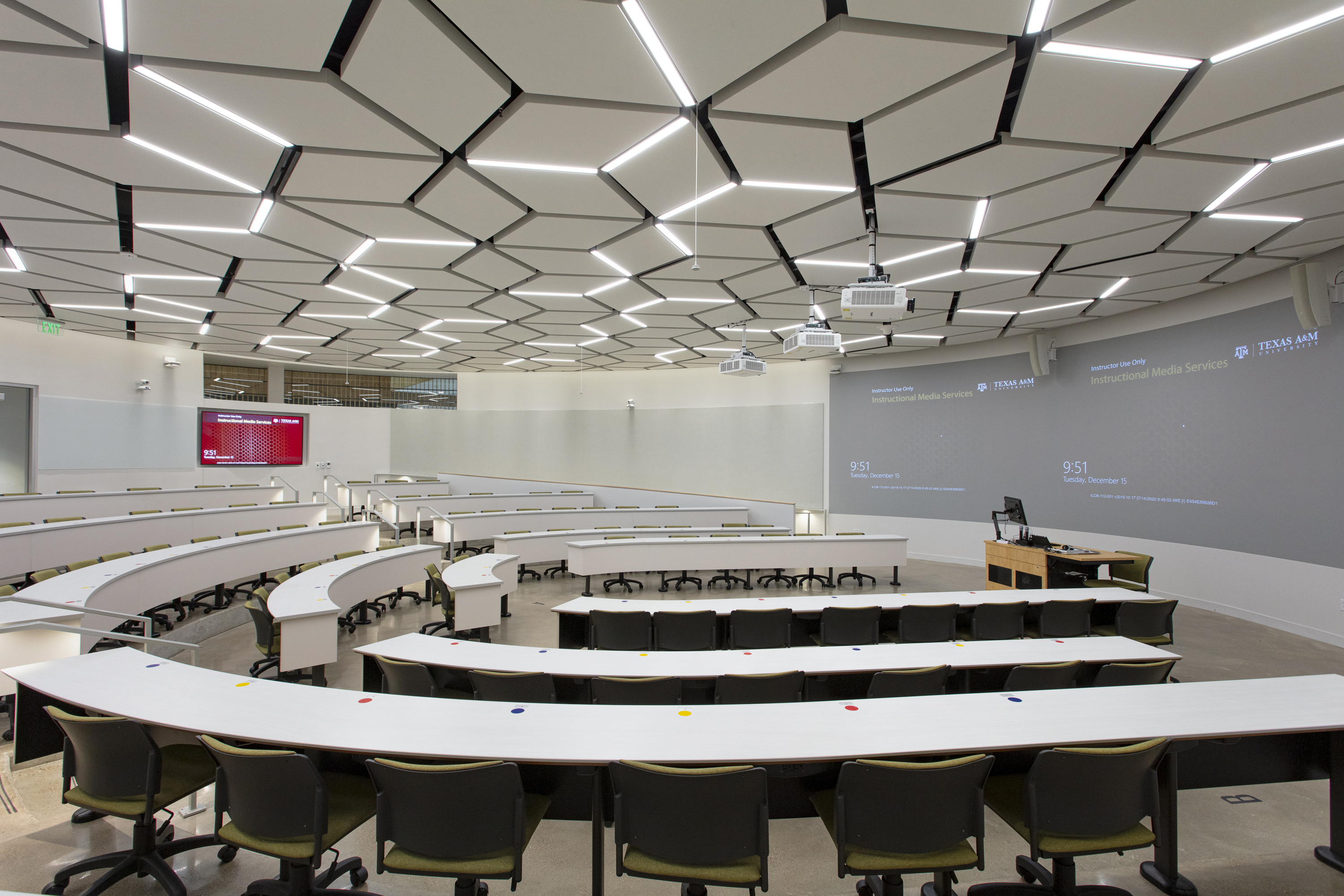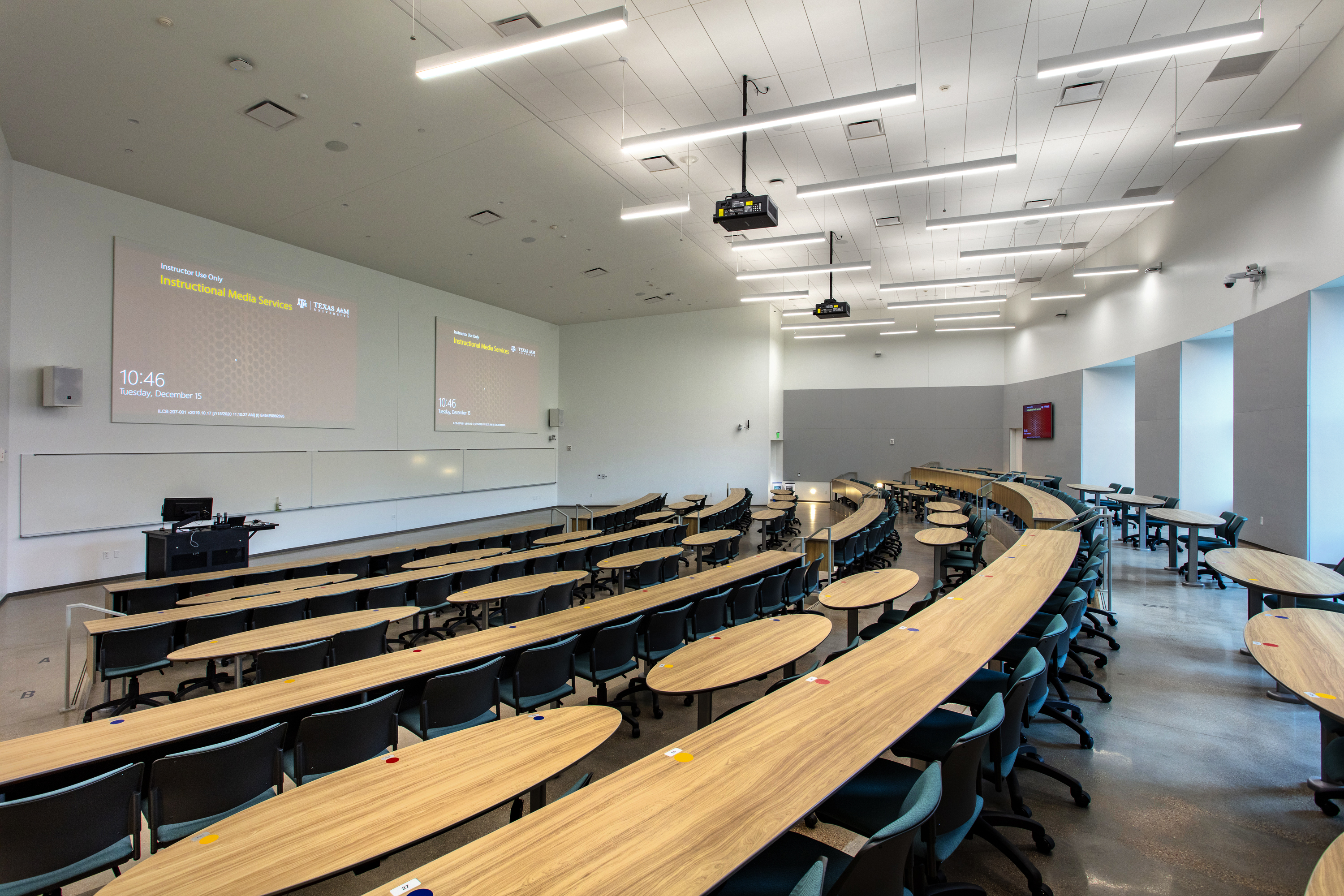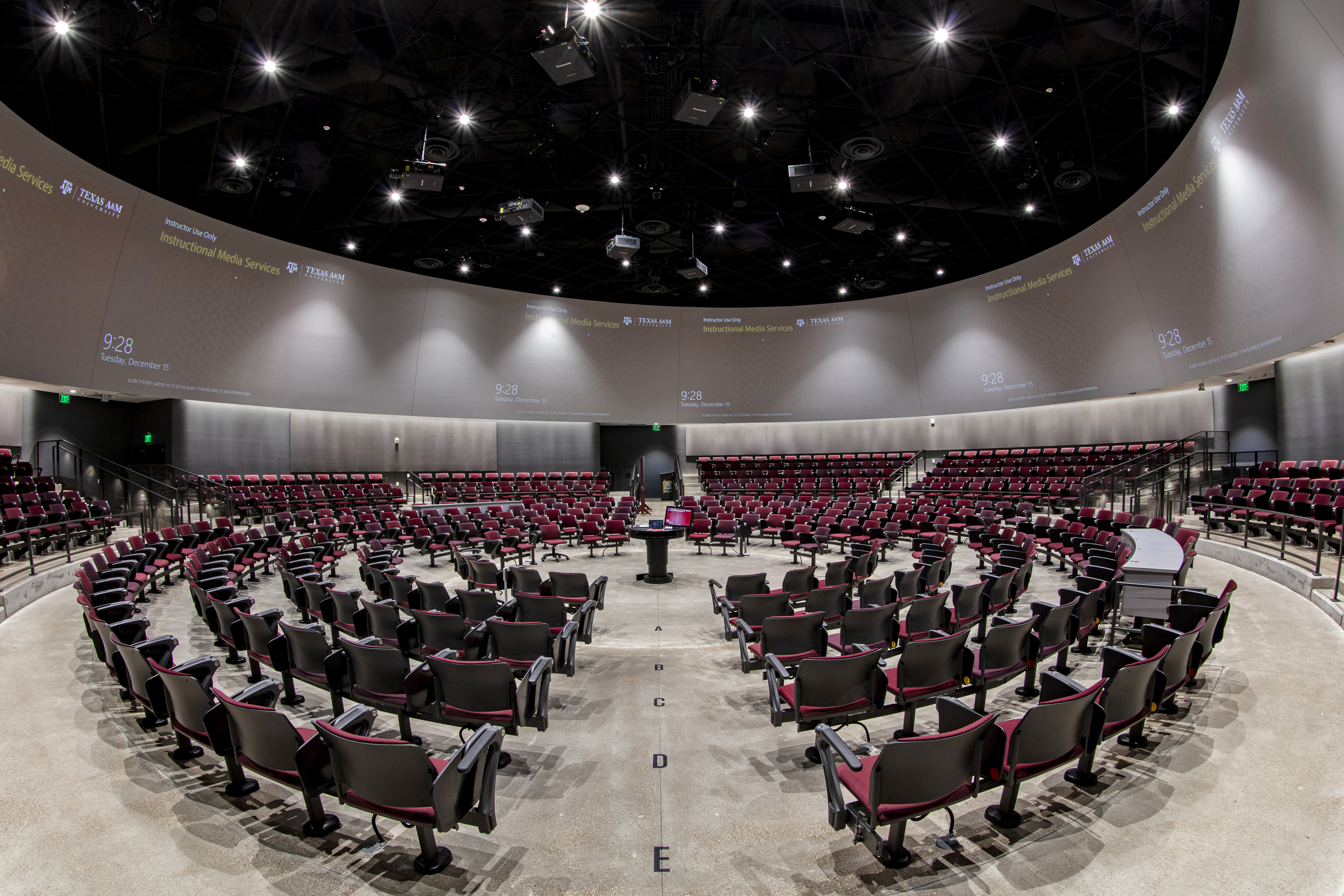Texas A&M University’s Instructional Media Services team works to keep students engaged consistently throughout the school year with limited disruptions to classes. While outfitting a new building on campus, the team set out to develop a learning environment that would not only attract students, but also faculty. Through the new building’s smaller huddle spaces and share pods to large, arena-style classrooms, the university wanted to create an environment to keep classes going 100% of the time as any loss of time in class can be detrimental to the learning experience.
For the new Innovative Learning Classroom Building (ILCB), the university aimed to bring forth a complete, networked AV ecosystem to help nurture a heightened user experience no matter where students and faculty are tuning in – from in the classroom, overflow spaces or in a remote location off campus. As a result, they began the search for flexible, easy to use solutions that supported the new spaces’ ability to accommodate not only classes, but also a wide variety of university or third party-led events.
While finding the right educational technology was a clear priority for the university, the Instructional Media Services team also needed to find a vendor they could trust and rely on to quickly to fill any support requests.
Combining Educational Technology and Immersive Experiences
To create a one-of-a-kind immersive learning environment, Texas A&M University turned to Panasonic’s team of visual experts to conceptualize and bring to life a cohesive learning environment for all. Panasonic’s PT-FRZ50U 1-Chip DLP® Laser Projectors created crisp visuals in smaller classrooms, while Panasonic’s PT-RZ12KU 3-Chip DLP Large Venue Laser Projectors used wide viewing angles to foster a truly immersive learning environment in the university’s top-of-the-line 600-seat arena-style lecture hall. At every step of the way, Panasonic provided one unified technological experience for the entire campus.
“Our classrooms are being used now for anything and everything. So, we’ve had to think beyond the realm of what a traditional classroom for learning purposes needs to be outfitted with to really making Texas A&M’s spaces multi-purpose for a wide breadth of events,” said Ty Navarrete, IT Manager II, Instructional Media Services, Division of Enrollment & Academic Services, Texas A&M. “With that, we needed flexible, easy to use and visually brilliant technology to fit our diverse needs as well as our goal of bringing this new building into the future with networked AV technology.”
Less AV Maintenance, More Learning
Prior to switching over to Panasonic’s projection technology, the university did not have a standard vendor and relied on lamp-based projectors. Juggling multiple projection vendors with outdated educational technology meant maintaining the university’s IT infrastructure took a lot of time on an unpredictable and costly schedule.
When collaborating with Panasonic to deploy laser projectors throughout campus, the Instructional Media Services team were able to rely on Panasonic's consistent and dependable laser projectors. As a result, their maintenance schedule became far more proactive and predictable. Since switching to Panasonic’s projection technology throughout the campus, the Texas A&M team has also experienced far less classroom downtime due to technology failures.
“With large classes, any loss of time past ten minutes is a big hit to any class we offer. With the new laser technology in place, downtime is far less of a concern now, which is particularly beneficial as we aim to get students back in an uninterrupted learning environment,” said Carlos Lucio, Assistant Director, Instructional Media Services, Division of Enrollment & Academic Services, Texas A&M. “With Panasonic’s projection technology now consistently deployed throughout campus, we’ve experienced far fewer failures across the board, which has led to huge improvements in maintaining and accelerating our entire IT program.”
Making Educational Technology Count
With service and maintenance now a predictable routine, the Texas A&M team was able to put a greater focus on innovating educational technology, classroom design, and campus networks. Specifically, the Texas A&M team collaborated with Panasonic on a projection configuration to fit the arena-style lecture hall's curved screens to enhance viewing angles. Using Panasonic’s Geometry Manager Pro Software, the team ensured visuals were clear and uninterrupted across the multiple displays.
In addition to flexible educational technology, the team also looked for an easily accessible collaborator they could cultivate a productive and amicable relationship with. On top of enhancing maintenance, reducing downtime, and deploying better visuals, communication with the vendor was a key factor for the university.
“Since the projection screens in the arena are curved – it was great working with Panasonic to customize our solution to fit our exact needs in this venue,” said Lucio. “It definitely took time and valued collaboration efforts to get this right, but once we set this projection up, we haven’t had any issues since.”



